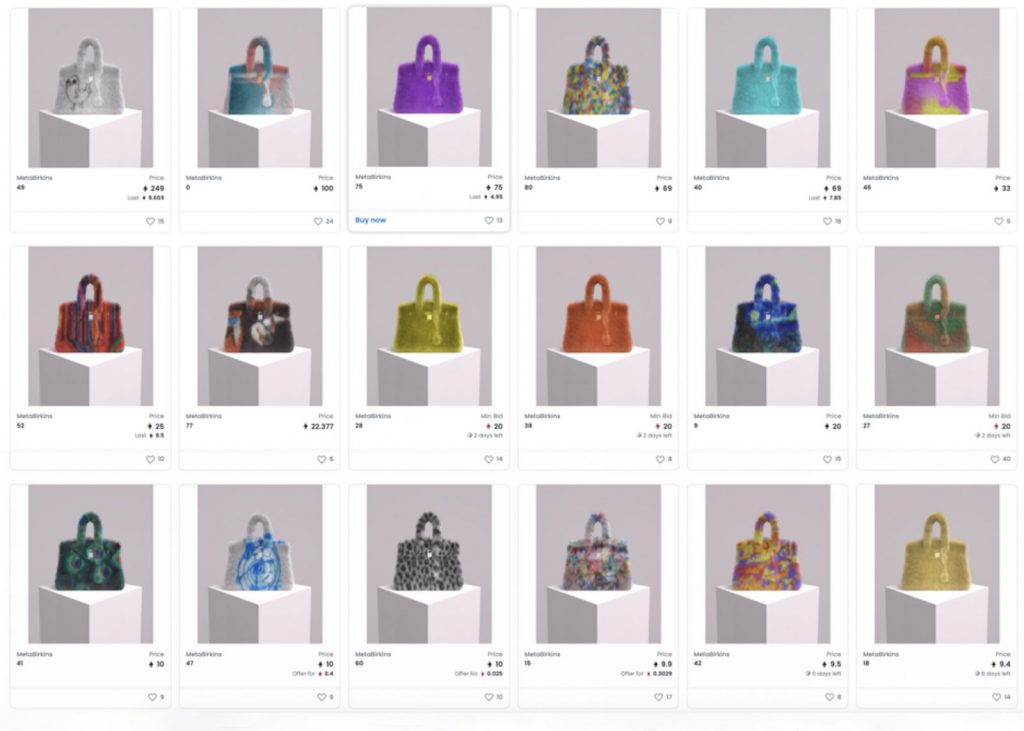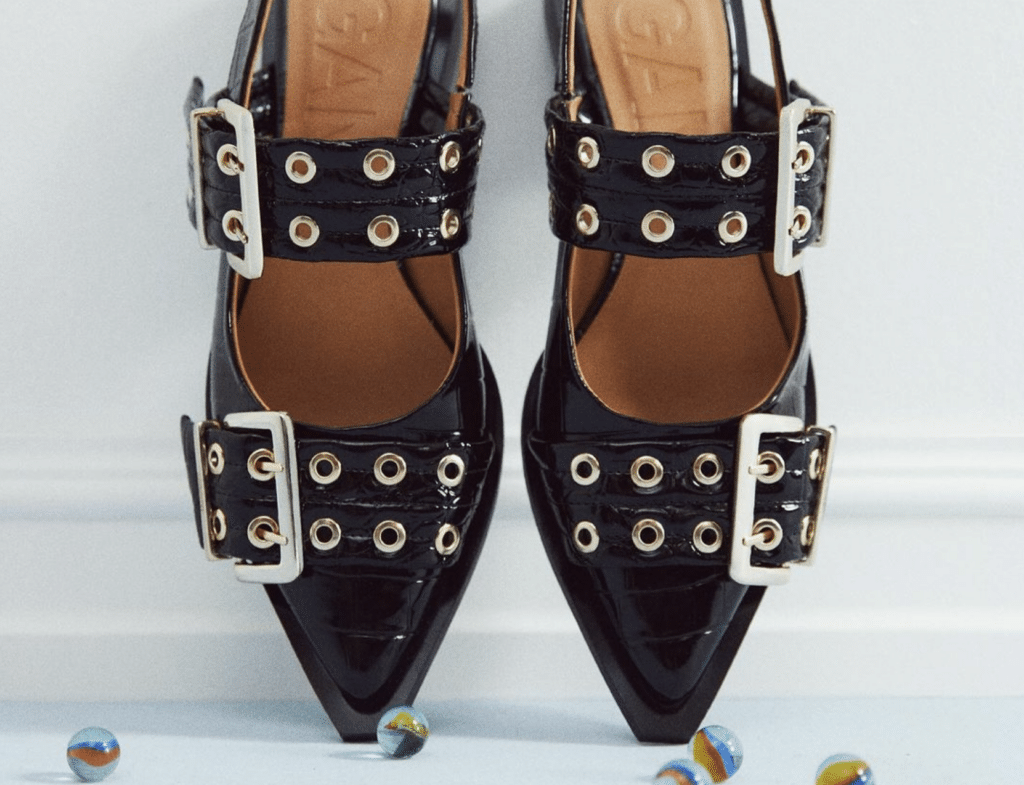A New York federal court has elaborated on its refusal to toss out the lawsuit that Hermès filed against the maker of MetaBirkins non-fungible tokens (“NFTs”). On the heels of Judge Jed Rakoff of the U.S. District Court for the Southern District of New York denying Mason Rothschild’s motion to dismiss the trademark lawsuit that Hermès’ lodged against him early this year in a “bottom line” order on May 5, the court has issued a memorandum order, stating that while there may be an “artistic aspect” to the images tied to the MetaBirkins NFTs, Hermès has, nonetheless, sufficiently pleaded its case for trademark infringement, dilution, and cybersquatting.
One of the primary issues addressed by the court in its May 18 memorandum order is the applicable test for determining infringement in connection with the MetaBirkins NFTs, which consists of furry images that mirror Hermès’ famous Birkin handbag that Rothschild first released in December 2021. “Because the digital images of the Birkin bags that are tied to the NFTs he sells are ‘art,’” the court states that Rothschild argues that “the Second Circuit’s test in Rogers v. Grimaldi applies.” Beyond that, Rothschild claims (as summarized by the court) that since he “uses ‘MetaBirkins’ as the title of the artwork and not as a source identifier of his products,” his use of Hermès’s Birkin trademark is entitled to First Amendment protection under Rogers, and thus, the lawsuit should be dismissed.
Pushing back against Hermès’ claim that the Rogers test does not apply (and that the two-prong test of Gruner + Jahr v. Meredith Corp. should be used, instead), Judge Rakoff stated that Rogers is the appropriate test “at least in part” for analyzing trademark infringement. In deciding on the Rogers test, the court was unpersuaded by Hermès’ argument that Rothschild is using “MetaBirkins” in a trademark capacity (i.e., as his domain url, social media handles, etc.), thereby, distinguishing the use at hand with the use in Rogers. Hermès asserts that Rothschild is using the “MetaBirkins” mark to “brand a product line, and to attract public attention and signify source,” and that First Amendment does not protect such “unauthorized use of another’s mark as a source identifier.”
Siding with Rothschild, Judge Rakoff states that his use of “the title of the artwork for social media and online accounts dedicated to selling the artwork” is equivalent to “the marketing and advertising approved in Rogers.” Moreover, the court held that Rogers applies even though Rothschild uses the NFTs to authenticate the Birkin bag-centric images. “Because NFTs are simply code pointing to where a digital image is located and authenticating the image, using NFTs to authenticate an image and allow for tradeable subsequent resale and transfer does not make the image a commodity without First Amendment protection any more than selling numbered copies of physical paintings would make [them] commodities for the purposes of Rogers.”
(The court states in an interesting footnote that Rothschild “seems to concede” that Rogers might not apply if the NFTs were attached to a digital file of a virtually wearable Birkin, in which case the ‘MetaBirkins’ mark would refer to a non-speech commercial product.” But the court states that “Hermès’ only contention on this score is that Rothschild might branch out into virtually wearable ‘MetaBirkins,’” and since the amended complaint does not contain sufficient factual allegations that Rothschild uses, or will in the immediate future use, the mark to sell such products, the court did not consider this in connection with the motion to dismiss.)
Even against the background of the Rogers test, the court sides with Hermès in refusing to toss out the case, stating that the French luxury goods brand’s amended complaint contains sufficient factual allegations that Rothschild’s use of the trademark is not artistically relevant and that the use is explicitly misleading, which are the two prongs of the Rogers test.
Looking first at artistic relevance, the court cited Louis Vuitton v. Warner Bros., stating that the artistic relevant prong “ensures that the defendant intended an artistic – i.e., noncommercial-association with the plaintiff’s mark, as opposed to one in which the defendant intends to associate with the market to exploit the mark’s popularity and goodwill.” Here, Hermès sufficiently alleges that Rothschild “entirely intended to associate the ‘MetaBirkins’ mark with the popularity and goodwill of Hermès’ Birkin mark, rather than intending an artistic association.” The court points to commentary from Rothschild, himself, including where he says that the MetaBirkins were intended as a “tribute to Hermès’ most famous handbag,” as evidence of this.
As such, the court declined to resolve at this stage whether the MetaBirkins “clear the admittedly low bar of artistic relevance.”
Turning his attention to the explicit misleadingness prong, Judge Rakoff finds that Hermès satisfies its burden here. “The amended complaint contains sufficient factual allegations to support a conclusion of explicit misleadingness,” as it sets out “more than simply use or actual confusion,” and contains “sufficient allegations as to Rothschild’s behavior, not just the impact of the use on consumers, the media, and the public, but also that Rothschild himself made statements that are plausibly interpreted as explicitly misstatements and that this engendered confusion on the part of consumers.” As such, the court denies the motion to dismiss the trademark infringement claims.
The court also refuses to toss out Hermès’ trademark dilution and cybersquatting claims, as these claims “rise and fall with the First Amendment defense to the trademark infringement claims and the application of the Rogers test: that if Rogers protects Rothchild’s ‘MetaBirkins’ uses against trademark infringement claims, it even more clearly protects against trademark dilution and cybersquatting claims.” Given that Rothschild “does not contend that the amended complaint lacks sufficient factual allegations to plausibly allege trademark dilution or cybersquatting,” and given that the court “concludes that the Rogers test does not support dismissing the trademark infringe claims at the pleading stage,” the court also denies Rothschild’s motion to dismiss these claims.
Hermès first filed the MetaBirkins-focused lawsuit against Rothschild in a New York federal court in January, setting out claims of federal and common law trademark infringement, false designation of origin, trademark dilution, cybersquatting, and injury to business reputation and dilution under New York General Business Law. The company is seeking monetary damages, including Rothschild’s profits, and injunctive relief to bar him from making further use of its trademarks, such as by “using any reproduction, copy, counterfeit, or colorable imitation of Hermès’ federally registered trademarks to identify any goods or the rendering of any services not authorized by Hermès.”
More than merely a clash between the two parties, the MetaBirkins lawsuit is striking, as it will potentially have significant implications for other brands and creators operating in the NFT space, which is rife with questions and uncertainty due to the relative novelty of the tech, which started garnering mainstream over the past year.
The case is Hermès International, et al. v. Mason Rothschild, 1:22-cv-00384 (SDNY).











